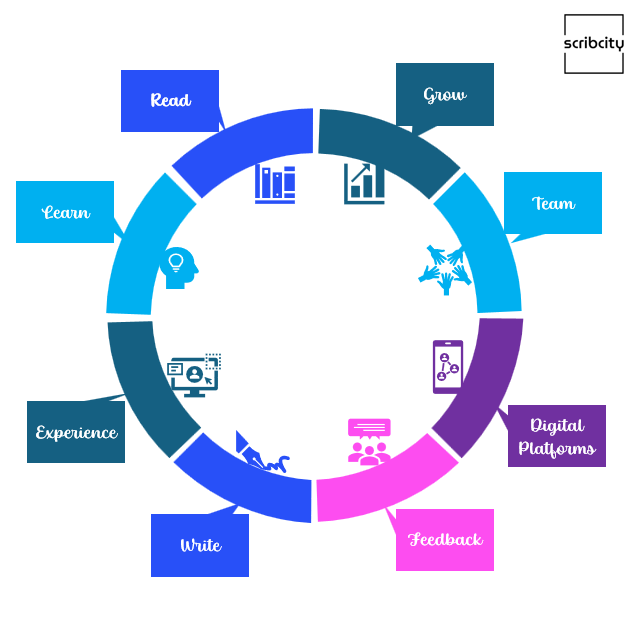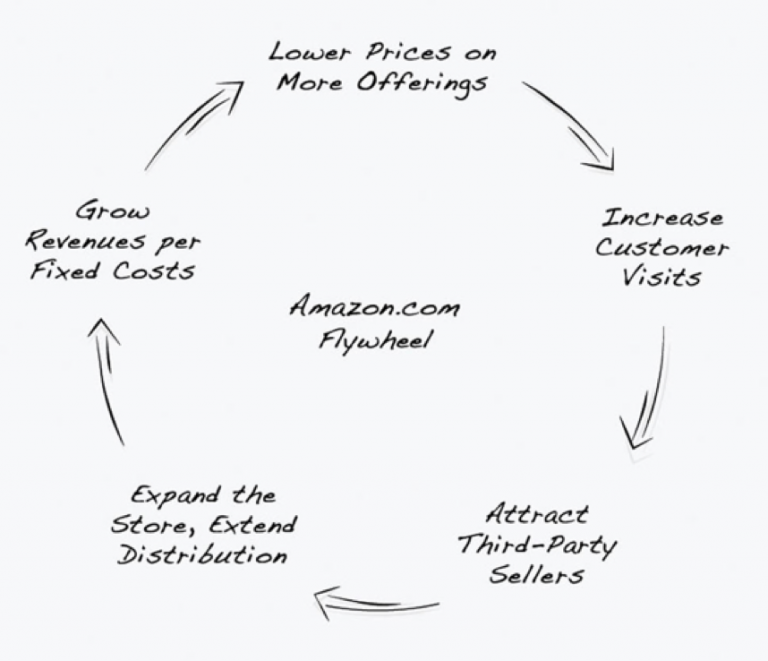
Scribcity Writer’s Flywheel – 8 steps for sustained success for Self Published Authors

The flywheel concept, popularised by Jim Collins in his book “Good to Great” describes how companies achieve sustained momentum and success through continuous, incremental improvements. We built a version for self-published authors, highlighting how authors can improve their writing and growth efforts over time with a consistent set of efforts. Before we get into the details, let’s cover some grounding principles and the general history of the flywheel concept.
Understanding the Flywheel
A flywheel is a mechanical device specifically designed to efficiently store rotational energy. Flywheels have a significant moment of inertia, and once they are set in motion, they resist changes in their rotational speed due to their inertia. They are used in various applications to ensure smooth energy delivery, maintain constant speed, or provide bursts of energy when needed.
To explain this in simpler terms, imagine you’re riding a bike. When you pedal hard and get the bike moving fast, it’s easier to keep going, even if you stop pedaling for a little bit. That’s because the bike’s wheels are spinning and have stored up energy. A flywheel works kind of like those bike wheels, but it’s used in machines and engines. It’s a big, heavy wheel that spins really fast. Once it gets going, it keeps spinning for a long time because it has a lot of energy stored up.
The Amazon Marketing Flywheel
In his 2001 bestselling title, Jim Collin’s introduces the concept of a marketing flywheel used by Amazon. As he explains, the marketing flywheel is a self-reinforcing cycle that drives growth and success.

It begins with providing an exceptional customer experience, which attracts more customers and increases traffic to the platform. This higher traffic, in turn, attracts more third-party sellers, expanding the product selection and making Amazon more attractive and convenient for customers. The increased activity allows Amazon to achieve economies of scale, reducing operational costs and enabling them to lower prices. Lower prices further attract more customers, enhancing the overall experience.
The savings and increased revenue are then reinvested into the business, driving innovation and further improving the customer experience. This cycle repeats, continuously reinforcing each component and propelling Amazon’s growth and market dominance.
Scribcity Flywheel
We took this brilliant and proven concept and reconfigured it to create a Writers Fly Wheel for self-published authors.
8 Components of the Scribcity Flywheel
Read
Read widely to gain diverse styles, expand your vocabulary, find inspiration, understand genres, enhance creativity, empathy, and critical thinking.
Learn
Be a lifelong learner. Continually improve, stay inspired, adapt to new trends, and deepen your understanding of the world.
Experience
Continually grow your life experiences to enrich your stories with authenticity, depth, and diverse perspectives.
Write
Write always to hone your writing skills, nurture creativity, and build discipline, essential for mastering the craft.
Feedback
Get a lot of feedback to identify your strengths and address your weaknesses.
Digital Platforms
Grow across social media platforms to connect with readers, build your brand, share your work, and engage with a wider audience.
Teams
Build and acquire a team for editing, design, marketing, and distribution to ensure your work meets professional standards and reaches a wider audience. While self publishing may seam like an individual endeavour, it is actually a team event.
Grow
Grow by continually improving each element of the flywheel. Improve, take learnings and implement. Each level of success or achievement requires more upskilling and growth to progress to the next level. Failing to continually grow will result in a writer rapidly becoming obsolete and uncompetitive.
Stay Consistent
Staying consistent across the elements is arguably the greatest factor. This may make all the difference.
